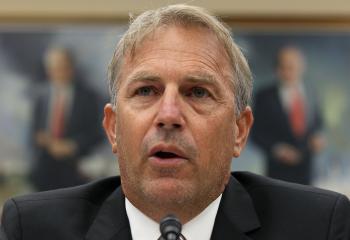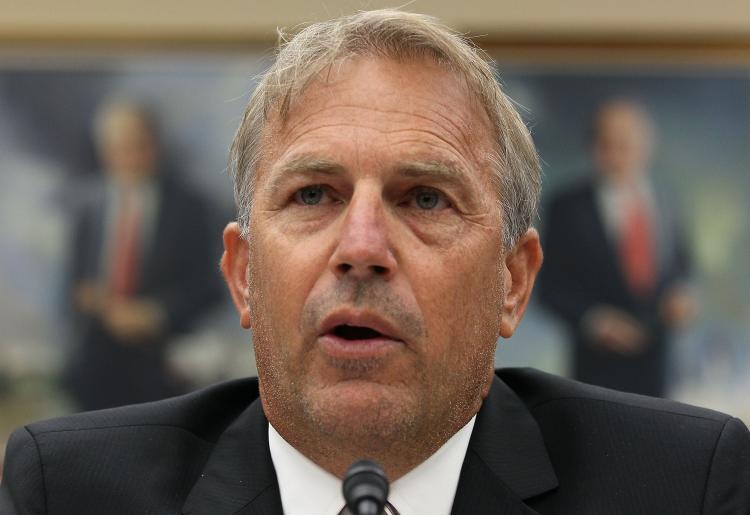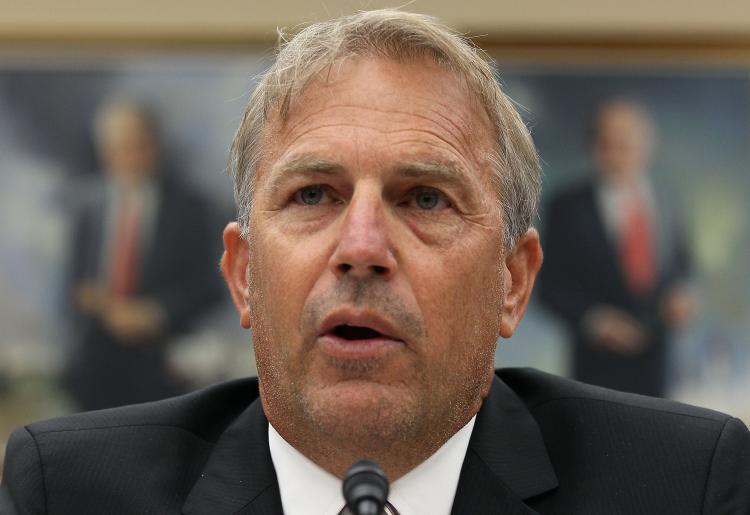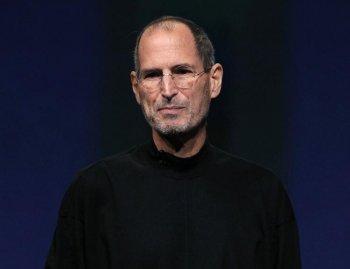Academy Award winning actor and environmentalist Kevin Costner recently struck a deal with BP, which has agreed buy his new oil cleansing devices. BP agreed to purchase the machines that Costner had developed along with his attorney and a team of engineers. The devices will be used in the ongoing efforts to clean up the largest oil spill in history.
By next week, the BP oil spill will be into its second month of non-stop oil flow.
A recent posting by All Headline News confirmed Costner’s deal with BP. The deal is reported to have been reviewed by the House Committee On Science.
Costner explained that his oil separation devices as being similar to other centrifuge oil separation machines that are used for cleaning vegetable oil.
“It may seem an unlikely scenario that I’m the one delivering this technology at this moment in time, but from where I’m sitting, it is equally inconceivable that these machines are not already in place,” Costner said to the House Committee On Science.
The technology utilized by Costner’s oil separation machines is not only applicable to oil but to a multitude of other applications as well. The oil separation devices employ the law of centripetal force that is created when matter is spun around a central location in a circular motion. NASA has used centrifuge technology based on centripetal acceleration to create non-gravity simulations. The same scientific principle is also used to separate elements during sugar production.
Costner unveiled his oil separation devices to local media in Louisiana at the end of last month. The machines are said to be able to remove 97 percent of oil that is mixed into water.
“We moved this to a technology that we know works and its worked for a long time. Its prepared to go out and solve problems, not talk about them,” Costner said to WDSU in Lousiana.
Costner took an interest in the science of water purification following the Exxon Valdez oil spill near the coast of Alaska in 1989. Costner, also a conservationist, spent a lot of time as a fisherman when he was not filming or starring in major motion pictures. After the last major U.S. oil spill, Costner has spent over $20 million of his own money to conserve and protect American wildlife.
By next week, the BP oil spill will be into its second month of non-stop oil flow.
A recent posting by All Headline News confirmed Costner’s deal with BP. The deal is reported to have been reviewed by the House Committee On Science.
Costner explained that his oil separation devices as being similar to other centrifuge oil separation machines that are used for cleaning vegetable oil.
“It may seem an unlikely scenario that I’m the one delivering this technology at this moment in time, but from where I’m sitting, it is equally inconceivable that these machines are not already in place,” Costner said to the House Committee On Science.
The technology utilized by Costner’s oil separation machines is not only applicable to oil but to a multitude of other applications as well. The oil separation devices employ the law of centripetal force that is created when matter is spun around a central location in a circular motion. NASA has used centrifuge technology based on centripetal acceleration to create non-gravity simulations. The same scientific principle is also used to separate elements during sugar production.
Costner unveiled his oil separation devices to local media in Louisiana at the end of last month. The machines are said to be able to remove 97 percent of oil that is mixed into water.
“We moved this to a technology that we know works and its worked for a long time. Its prepared to go out and solve problems, not talk about them,” Costner said to WDSU in Lousiana.
Costner took an interest in the science of water purification following the Exxon Valdez oil spill near the coast of Alaska in 1989. Costner, also a conservationist, spent a lot of time as a fisherman when he was not filming or starring in major motion pictures. After the last major U.S. oil spill, Costner has spent over $20 million of his own money to conserve and protect American wildlife.






